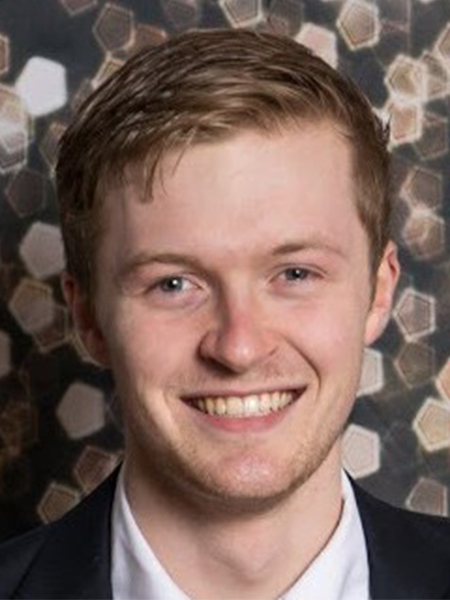Two AAE students selected as NDSEG fellows
AAE graduate students Derek Mamrol and Lauren Wagner were selected for the Department of Defense’s National Defense Science and Engineering Graduate Fellowship Program.

The NDSEG fellowship serves as a means to increase the number of United States citizens trained in science and engineering disciplines of military importance and seeks to develop continuing relationships with recipients and the sponsoring military services. The fellowship, established in 1989 and sponsored by the Army, Navy and Air Force, lasts for three years and pays for full tuition and all mandatory fees; a monthly stipend ($38,400 annually); a $5,000 travel budget over the fellow’s tenure for professional development; and up to $1,200 a year in health insurance.
Mamrol, a master's student, is studying how surface roughness on a hypersonic vehicle can affect crossflow induced flow transition. Real flight vehicles have a wide variety of inherent roughness on their surfaces due to the materials used in vehicle construction. It is not well understood what features of this inherent roughness have an effect on crossflow vortices that form when a vehicle is at an angle of attack. Mamrol’s research aims to create metrics that engineers can use to determine what types of roughness are acceptable for flight vehicles.
“Receiving this fellowship is a great honor and frees up funds that will be used to purchase equipment to advance the work of everyone in my lab group,” said Mamrol, whose advisors are AAE Professors Steven Schneider and Joseph Jewell.

Wagner works with Purdue’s Boeing/AFOSR Mach-6 Quiet Tunnel group to study experimental hypersonic boundary layer transition with co-advisors Schneider and Jewell. Her research focuses on studying the amplification of vortices as they travel across a separated flow region caused by a shock boundary layer interaction at Mach 6.
“This fellowship alleviates some of the financial stress associated with pursuing an advanced degree, allowing me to focus more on my research,” said Wagner, a master's student. “This fellowship also helps my research lab, allowing for funds for better equipment to enhance the lab's research capabilities.”
Since the program’s inception, more than 4,000 fellowships have been awarded from nearly 60,000 applicants. DoD plans to award new three-year graduate fellowships each fiscal year (subject to the availability of funds) to individuals who have demonstrated ability and special aptitude for advanced training in science and engineering.
